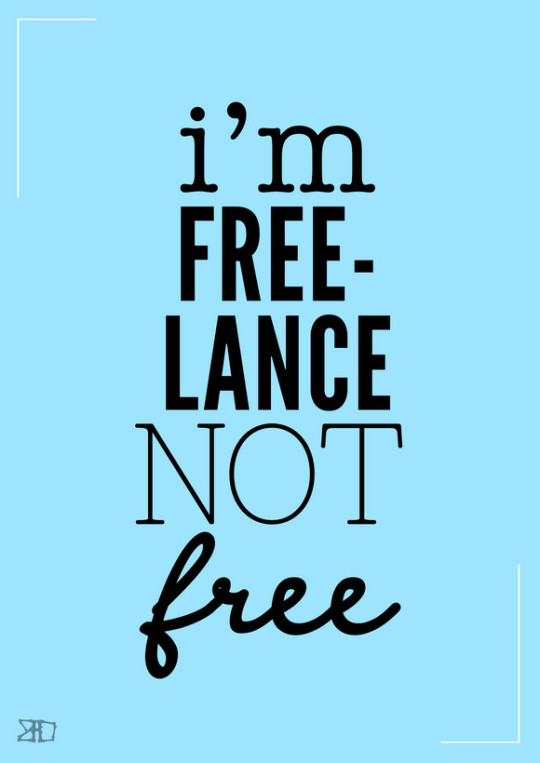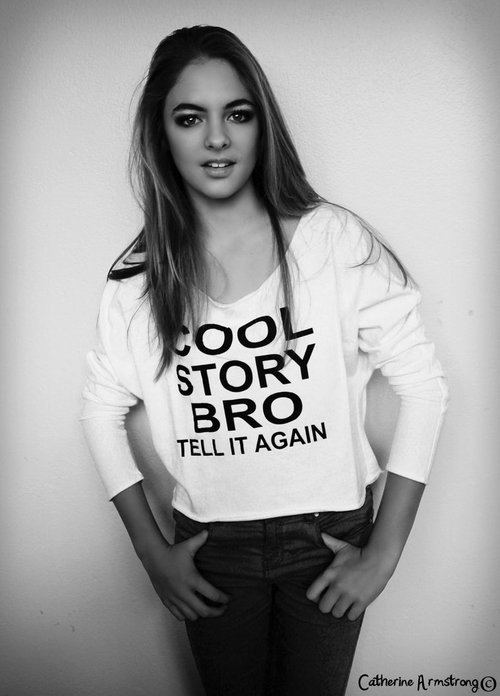Photo

What does the moon landing have in common with goal-setting?
When Neil Armstrong took his first step on the moon and uttered those immortal words, I wasn’t around to experience the power and impact of those words on his generation. Having grown up several decades after that momentous event, when I watched the moon landing on the tele and heard his message to the earth, I could experience his sense of achievement minutely, but I couldn’t yet relate to it.
This changed when I signed up for a goal setting workshop recently. At first, I wasn’t exactly sure of what to expect, being the skeptic that I am. But I decided to attend it with an open mind and give it an honest effort. After all, the venue, at Verity, was chic, beautiful and exclusive; registration wasn't blowing a hole in my pocket, as most of these workshops are famed to do; and I had heard very good things about the workshop facilitator, David Graham of Edge3, an executive and leadership coach.
I was one among a motley crew of new and seasoned business owners who specialized in mortgage, architecture, home renovations, nutrition, web design, music etc. While we were all from different walks of life and professions, we all had one thing in common, goal setting. We were there to learn how we could set our business goals for 2016.
It was one of the most productive and fulfilling evenings for me, professionally and personally, as I learned that goal setting is a necessary step not just for business success, but also for personal success. For most of you this might be pretty obvious, but for me I had never approached my personal life from a goal setting point of view. For me, life was a macrocosm that we fell into and how it turned out for us personally was just happenstance. Yes, we can control the outcome of certain microcosmic milestones within it, like our careers – hence the goal setting – but when it comes to personal life, I didn’t think I needed to apply goal setting techniques to better it. Boy, was I wrong! And boy, I wasn’t the only one who came out of the workshop feeling like we had stumbled upon a revelation.
Here are some of the key takeaways from Edge3’s Strategic Goal Setting Workshop:
It is important to have a very clear vision of what your goal is. Writing your goal down on paper makes it more actionable.
Answers to these questions will help flesh out your goal:
Why is the goal important to me?
What is the time frame within which I will make it happen?
Who is going to hold me accountable?
How can I immediately take the first step towards my goal?
Identify your external and internal barriers – these could be your personality traits, your competition, lack of time, lack of money, lack of skills, or even the people you surround yourself with
Identify your external and internal power sources – things you draw inspiration from and that push you forward like nature, books, your tribe (friends and professional network), your creativity, your successes, or your intuition
Write down your strengths and what they enabled you to achieve throughout the year – acknowledging your strengths is a great way to further build upon them. Having a friend or colleague help you identify your strengths is a great way to not only validate your beliefs but also flush out the strengths you weren’t aware of
Remember to have a concrete plan to celebrate your successes as was poignantly stated by Meaghan Hutchings, The Mortgage Coach “while I had already identified several business/financial goals prior to the workshop, I had not given much thought to personal goals or quality of life. It became clear to me (in the workshop) that I had not celebrated my accomplishments throughout 2015...something I will be mindful of in 2016.
Long-term goals are great, but they tend to come in the way of smaller more achievable successes that provide the fuel to keep going forward. “I’ve always tended to focus on long-term goals (as in 5+ years), but it can in itself be a barrier to focusing on shorter term goals. After building the business up, I’ve decided to focus the following year on some very specific revenue & profit goals in 2016. The change will result in a more secure future for my family along with pride in what we've accomplished”, Brent Kobayashi, Kobayashi Online.
So what has the moon landing got to do with strategic goal setting? Small steps lead to big things. It all starts with taking time out, being honest with yourself and writing it down on paper, an exercise - I would like to think, Neil Armstrong practiced. Whether you want to start a blog to advertise your business, or do yoga every day to better your lifestyle, the first step is to analyze your needs vs. your wants and write them down on paper.
By- Sohini Bhattacharya
Note: An abridged version of this post was published in The Buzz, Professional Independent Communicators (PIC) December 2015 Newsletter.
0 notes
Photo
This is why I love what I do and rock at it!

“The best thing about working remote is the fact that I can still travel and sleep on couches when I feel the need. This is the first job I’ve had that’s embraced my wandering mind rather than holding it back.”
7 notes
·
View notes
Text
Can I be a Content Marketer? The New Indie Conundrum

By: Sohini Bhattacharya
Content marketing is receiving quite a bit of ink these days, thanks to the digitization of information. Like me, if you’re a new indie writer attending a content marketing conference, sticky adages such as “if content is king, distribution is queen” and “content is not the king, it’s the kingdom”, quickly become your mantra and you find yourself chanting these buzz phrases at meetings trying to convince your client to make budgetary allocations for content marketing, and why you are the right person for it. But before jumping on to the band wagon, it’s important to know what you are taking on as a marketer in the sea of content.
In a bid to find the truth, I turned to a fellow indie, IABC colleague, content creator, marketer, and curator, Susan Diaz. Susan lives the indie life “helping companies find their content marketing and social media appetite.” She helped break down content marketing into digestable portions thereby highlighting these key considerations for content marketers and employers.
1. As an independent, what are some of the challenges you face as a content marketer?
One of my big challenges is establishing measurement and ROI parameters. It’s hard to explain that while content needs to have clear goals and metrics to track, the number of new followers you got on your Twitter account is not necessarily one. It’s much more relevant to check traffic to your website - unique visitors, time spent, etc. To quote CMI’s @Robert_Rose, analytics can sometimes be ‘weapons of mass delusion’. Numbers going up means very little without a context and a link to your business goals.
Another challenging discussion is consistency. People will ramp up leading to big milestones and while that’s not a bad idea, being completely silent the rest of the time is. This might be because it’s early days yet for mass acceptance of content marketing as a ‘thing’, and many organizations haven’t started allocating formal budgets to it. 2016 will be different I believe, my clients are starting to see value and are putting it into their budgets plan for the year.
2. What are some of the resources that you can recommend for those starting out as content marketers?
I’m a big fan (and moderately worrying stalker) of @NeilPatel. This list of curated links from his Kissmetrics covers pretty much anything you’d like to read about on content marketing. The beginner section is comprehensive and walks you through benefits, goal setting, blogging, creating a content calendar and presents some excellent examples. For the more experienced content marketer, it has sources, tools and several great tricks of the trade.
The Hubspot blog and MarketingProfs are other favourites. It’s also a great idea to look up successful content marketers in different realms (B2B, consumer, various verticals as well as independents), on Twitter.
Read and share materials range from Feedly (all-business news aggregator app) and theSkimm (what I call ‘chick litt’ for news). Others are SmartBrief (which offers newsletters by vertical), BuzzSumo (popular posts by keyword/brand/industry/topic you search), LinkedIn Pulse, and don’t forget Google!
3. What should employers be looking out for in those who claim to be content marketers?
Before anything else, do a quick check to see how well your prospective content marketer walks the talk. Do they have a blog? (A blog doesn’t have to be a long Wordpress discourse; a well-managed Tumblr account that tells a compelling visual story counts.) When is the last time they posted? Are they active on the channels they recommend? Do they understand the value of strategy and measurement? Do you like their thinking and style of writing? Do they display range? Are they familiar with your industry or show an ability to learn? Ask to see legitimate samples of their work and speak to references.
Also, do you like the person? A content marketer, even on the outside, is part of your marketing team, so people dynamics matter.
4. What are some of your content marketing predictions for 2016?
I see change coming in four areas:
a. Content will go visual
b. SEO will become better integrated into content
c. Distribution will expand to more channels
d. Technology will seize its opportunity in marketing
5. As a content marketer, what are some of your daily tasks for your clients?
A lot of writing! In a regular day, I do A LOT of reading and research as well. Both for curation on social media for clients (and myself) as well as to form the basis of the content I create. You can’t create content unless you consume content.
Increasingly, I find I do more visual work. I’m no designer by any means! It’s just the nature of the job. If you have an eye for beauty, life is much easier with things like taking and sourcing pictures for visual posts, twitter cards and the like. I also create infographics – my favorite tools for those are Pictochart and, more recently Canva.
Lastly, my days involve a fair chunk of community management: posting to, engaging and conversing with audiences on various social channels. Which is why my smartphone is my best friend (or something sounding less sad). So listen up Gen Z, the next time someone tells you to put your phone away, tell them there are careers involving staring at your phone that you’re preparing for!
6. Do content marketers HAVE to be social media buffs and digital geeks? What about those who haven't really bought into the whole social media thing yet?
While content is becoming vital to any successful marketing plan today, a large part of its success depends on the distribution. Which in 2015 in primarily digital. So I’d find it hard to envision a mutually exclusive situation for content and social.
Having said that, finding a good creator of content is not easy. If someone is a superlative writer or designer but isn’t keen on the social space, prioritize them over someone who understands the channels but can’t create. The way I’d do it would be to look at your offerings as a team. If you create great content, get together with someone who is passionate about social and offer the whole package, and vice versa.
7. How can you identify content marketing hacks?
Oh, this is always a good one! Beyond a point, depth is what will give someone away. They’ve got to slip up somewhere if they’re not the real deal! Ask lots of questions and the right ones. Pretty soon you’ll be able to tell who really knows their stuff and who can’t tell an advertorial from an infographic!
by: Sohini Bhattacharya (Co-Founder & Managing Partner) Allegoro Communications - Published in IABC’s Communicator Magazine
#content marketing#content is king#buzzsumo#feedly#kissmetrics#hubspot#marketingprofs#smartbrief#theskimm
0 notes
Text
Negotiating Pricing Pitfalls for New Indies

The Growing Pains
When I decided to change gears from a steady 9-5 job, and set my own standards as a freelance writer, I was armed with experience, passion and courage, but not preparation. I wasn’t aware of, let alone ready for, the pricing pitfalls I would find myself pirouetting around. It felt like being in a mine field armed with a gut feeling, but no map.
I knew what my work was worth, but I didn’t know that clients don’t care. All they want is the cheapest, best option. From the get go, I found myself struggling with a cliché – should I charge hourly or by project? I chose hourly, to keep it simple, after endless Googling of the going rate. It seemed like a fair and well-researched starting point. I had a “decent” contract in place, customizable for every client. However, I hadn’t accounted for the multiple revisions that my writing would be subjected to by clients who didn’t know their mind. I became not just a writer, but also an advisor helping clients keep it real. What would have taken two hours, ended up taking one whole day, and I got paid for only the hours that I actually wrote.
The familiar feeling of being used as an employee was back.
Soon client#4 came along and I was charging by the project. I made sure to account for meetings, revisions, writing and advising which increased the project quote. It was now harder for me to get a “yes” from the client. I found myself justifying my post-graduate degrees and my experience. What I didn’t have was a creative brief to make convincing a little easier. After a few meetings, I landed client#4 who signed on the dotted line. When payment time came, the client summoned an emergency meeting to say that my invoiced rate was too high, and that she couldn’t pay me unless we re-negotiated a lesser rate. Remember, I did say that she signed the on dotted line – literally! While suing was an option, it wasn’t affordable for a new indie like myself. Begrudgingly, I said “I am happy to quote a lesser rate, but please make sure to read every word of the new contract before signing it this time.”
My Take Home
After numerous readjustments to my pricing strategy, I think I see the light at the end of the tunnel. These pricing truths shine bright for me:
· consult experienced indies who have negotiated their pricing pitfalls and can help you avoid yours
· pricing cannot be rule bound but should be determined based on a thorough analysis of the work scope, and your gut
· value your work, find YOUR price, and stick to it
· make Writer’s Market , The Well-Fed Writer and The Wealthy Freelancer your bibles
· draft a creative brief for your client
· use a project management approach to price your ideas
· veteran freelancers may decry the use of contracts, but contracts are legally binding and go a long way
· make no assumptions.
by: Sohini Bhattacharya (Co-Founder & Managing Partner) Allegoro Communications - Published in IABC’s Communicator Magazine
1 note
·
View note
Text
4 Tips for Consistent and Timely Blog Content

By: Carly Wallace, Guest Blogger
Consistent blog content creation helps build reader loyalty and search engine optimization (SEO) results. It gives the blog a better chance of being used for key words and can position the author as a credible source. This is a huge deal considering there are few of us who look at the second page of a Google search. Unfortunately there is no magic secret for constant content creation. It takes creativity, research and what a lot of us don’t have; time. You may think that blogging isn’t that important but in a business context, it is your marketing tool. Even if you don’t have your own business you are marketing the most important thing which is you. Whether you suffer from “bloggers block” or are strained for time, here are four tips on how to keep up your content:
1) Write several blogs at once
If you have a day full of ideas, use it. You can always write several blog posts at once and that way you have content ready when you want to post.
2) Create a content calendar
A content calendar is like an agenda for your posts. It helps to organize your thoughts and visuals. Create a sheet that includes the due date of the post, the visuals and any preliminary research or text you would like to use. Doing this in advance can save you research time later since you already have the base for your post. Most importantly, you are setting due dates for yourself.
3) Write articles based on timely trends
We all saw how viral “the dress” went. Why not use these trends to your advantage. Using a trend that relates to your topic can help to grow your audience and spark some new ideas. If you are stuck on timely trend ideas, check out the national day calendar.
4) Interview guests
If you are having a hard time creating new content, interview someone related to your topic and feature them on your blog. You can reach your own audience as well as theirs and gain new insight into your topic.
These tips can help bridge the gap between the planning and execution of your blog. At the end of the day, practice makes perfect or at least, good consistent content.
0 notes
Text
Your Business is on Social Media, now what?

In our previous blog post we had written about the top social media platforms out there, that businesses need to get on board with. Carrying on along the same vein of thought, I'd like to bring to attention the point that having your business sign up with all the leading social media platforms is just the first step toward making your organization socially engaged.
Through her article, Jane Hart, Founder of the Centre for Learning & Performance Technologies, is insightful in pointing out that social media built it's way to where it is from the bottom up, and as such it is a real revolution. It started from a grass roots need for people to be social, to share, to build personal connections with each other online, and grew into a phenomenon that has become an essential tool for businesses to be successful.
Everyday while new and veteran businesses get up to speed with social media, it is remarkable to know that a lot of these businesses do not actually know how to use this valuable tool. They do not know what the next step is, after signing up.
Recently, I had the pleasure of attending a presentation by my IABC colleague, Donna Papacosta, owner of Trafalgar Communications, on the topic of "How to market yourself with social content". Donna had some very useful tips on how independent businesses and corporations can create, use and find content for their social media presence and integrate social content into their marketing strategy. To do this, it is important to make smart use of social media, armed with a proper strategy, while recognizing it for what it is.
At it's grass root level, when social media had just started off, the content was indeed all about you, but now in its more refined and sophisticated form, content marketing through social media is not all about you, and how you spent your evening. It is about all the useful content out there that will help you get recognized as an expert in your niche, it is about building relationships with influencers in your market, it is about using great content to build communities both online and off, it is about being appropriate in your social activity, it is about timeliness in content dissemination, and it is about knowing how to use the right social media tools relevant to your business.
As Donna says, "Social media without content marketing makes no sense". There has to be a clearly defined objective, without which your social media engagement is uncreative, un-engaging and un-authentic.
by: Sohini Bhattacharya (Co-Founder & Managing Partner) Allegoro Communications
0 notes
Text
How Social is your Business?

In today’s connected world, it is not only expected but almost assumed that every business will have a social media presence, with regular activity on at least 2-3 platforms. Having a social media presence is essential for everything from marketing, brand building, to content awareness.
This informative survey of social media platforms being used by businesses in 2014, highlights noteworthy trends.
Facebook is still the top social media platform, with 90% of marketers using Facebook ads. LinkedIn continues to be one of the most widely used platforms for small businesses, the most obvious uses being (a) hiring new employees, and (b) making useful connections for building one’s business. The latter point is especially relevant currently in Canada with the implementation of the Canadian anti spam law (CASL). While the motivation behind the law is well-intentioned with the idea of aggressively cracking down on email spam, it can also be extremely restrictive for businesses that have used email for their marketing campaigns.
In the context of the CASL, one of the possible ways to make new connections would be through referrals from existing contacts on LinkedIn, who might be likely to provide a friendly introduction to some of their connections. As one business owner in Toronto mentioned, “Although we make a compromise on quantity, the quality of the connections we make through referrals is much higher. You have the opportunity to sit down and chat over coffee.” This is a luxury that a conventional email campaign does not always afford.
Twitter is the best platform for promoting one’s business through microblogging in the form of content curation. YouTube still remains the best platform for building one’s brand. Other platforms such as Google+, Pinterest, Instagram are rapidly gaining ground.
It will be interesting to see how the social media space evolves for businesses in the next couple of years. Till then, it is imperative for businesses to re-evaluate their social media presence and strategies. A key point to remember here is that having a social media presence for your business is MUCH MORE than posting once a day on facebook and twitter!
by: Sohini Bhattacharya (Co-Founder & Managing Partner), Allegoro Communications
0 notes
Text
Grant-ed: Part 2 - The BIG 3

Photo source: www.yourcapitaledge.com
In part 1 of this series, we provided an overview of Canadian grants in general. We specifically addressed questions such as, what kinds of funding sources fall under grants, what are the types of grants (i.e. what are the different ways by which grants may be classified), and why is the grant application process challenging.
As mentioned in part 1, there are thousands of grants available based on the funding source and the sector or need. As such, one of the initial challenges in the grant writing process is sifting through the thousands of available grants, and finding the right grant that not only addresses your requirement but also addresses the grant funding agency’s mandate. Here, we will explore some of the government grant sources with a focus on academia and industry.
The BIG 3
All good things come in their three's, and the government is no exception to this. The three main federal funding agencies, collectively known as the “Tri-Council”, are the Natural Sciences and Engineering Research Council of Canada (NSERC), the Social Sciences and Humanities Research Council of Canada (SSHRC), and the Canadian Institutes of Health Research (CIHR).
NSERC’s mandate is to promote and assist research in the natural sciences and engineering disciplines with the goal of enhancing scientific discovery and technological innovation in Canada through research. Within this broad goal, a wide variety of grants are available through different NSERC programs for supporting (a) postdoctoral fellows and postsecondary students, (b) institutions and colleges, (c) professors on research projects, and (d) industry. Some grants support only research, while some grants support academia and industry collaborative partnerships fostering the translation of research in a university lab to innovative product development for an industry partner. These grants also differ based on the nature and scope of the research projects (i.e. duration, project impact, stage of application development etc.). NSERC also provides grants in the form of awards to individual researchers for research excellence.
Like NSERC, SSHRC promotes and assists post-secondary research, but in the areas of humanities and social sciences. SSHRC’s focus is more on generating and nurturing talent, and building good ecosystems and communities for a better Canada. SSHRC offers funding opportunities through three programs aimed at (1) supporting and training students and postdoctoral fellows, (2) building knowledge and understanding about people, societies, and the world, and (3) facilitating the flow and exchange of research knowledge.
CIHR, as the name suggests, funds health research in Canada. It provides grants in areas that fall under any of four themes: (1) biomedical research, (2) clinical research, (3) research pertaining to health systems and services, and (4) research concerning the social, cultural, and environmental factors that affect the health of populations. CIHR offers funding to independent researchers (e.g. university professors), universities, health care institutions (teaching hospitals), voluntary health sector organizations, research institutes, and companies.
In essence, if scientific research is a major component of the day-to-day activities of your business, the tri-council would be one of the first places to look for potential grant funding. It cannot be overstated that the application process is stringent, competitive, and requires considerable amount of time to be spent on researching the requirements of a particular grant offered by the government agency. Grant applications go through an intense peer review process by a panel of experienced experts who can separate facts from embellishments with ease. Therefore, a good approach is to look for a grant that suits your business needs as opposed to adapting your business (on paper) to suit the grant’s specific requirements. This does not mean that every aspect of your business should satisfy the grant agency’s mandate. Grant applications require convincing the agency about your suitability by carefully highlighting specific aspects of your business that are more relevant for that grant. A professional writer through his or her experience can help with the process of identifying a suitable grant that you are eligible for, researching the grant’s requirements, and catering your application to satisfy those requirements.
Happy Grant Hunting!
by: Naresh Vempala (Founder & Partner) & Sohini Bhattacharya (Co-Founder & Managing Partner), Allegoro Communications
0 notes
Text
Get The Nitty on the Grit

What is the key to success? This is a tough question to answer given that the term “success” is relative and may imply different things to different people. In this blog post, we are narrowing the term success to a few contexts, specifically academic or professional success.
Angela Lee Duckworth is a professor in psychology at the University of Pennsylvania. She studies how concepts such as grit and self-control can predict academic and professional success. Her studies involve a wide range of research participants in diverse fields ranging from students to corporate sales people. One interesting and poignant finding is that her studies have repeatedly shown grit to be the most important predictor for success.
It is important to understand what she means by grit. Grit, according to Duckworth, is a combination of perseverance and passion for long-term goals. Grit does not involve intense bursts of short-term productivity. Grit is more about the constancy of effort towards achieving a specific long-term goal that we feel passionate about.
So, is talent important for success as well? Although Duckworth’s research has not shown talent to be a strong predictor for success like grit, this in no way undermines talent. Talent certainly helps perhaps in giving us an initial advantage. But sustained effort, or grit, is what ultimately determines performance.
Grit also enables us with the ability to continue our efforts towards a goal despite failure. It helps us to be resilient when confronted with failures, accept them, and take lessons from them that could be applied towards our continued efforts in a specific direction.
Watch this video for Angela Lee Duckworth's talk on grit, and decide the debate on grit v. talent.
by: Sohini Bhattacharya (Co-Founder & Managing Partner) & Naresh Vempala (Founder & Partner), Allegoro Communications
0 notes
Text
Grant-ed

Most of us have a sense of what grants are, but are unclear beyond a certain point as to what grants entail. While there are certain common elements shared by grants in general, there are also differences in the nature and requirements of each specific grant. This is the first of a multi-part series, where we will attempt to provide a broad overview and cover basic information regarding grants, more specific to Canada.
These are some of the questions we often encounter with our clients:
What is a grant? A grant is a form of financial assistance, usually provided in the form of money, that does not require repayment, unlike a loan. Grants vary in amounts and differ in their type of financial assistance. While some grants provide money upfront, some might involve reimbursement of eligible expenses. Some grants may offer financial value through access to goods, services, or resources.
What are the different types of grants? There is no single correct answer to this question. There are thousands of grants available within Canada. These grants may be classified in different ways. Two broad ways to think of grants are: (a) based on the funding source (e.g. government funded grants, grants from private and public foundations that are generally non-profits, agencies, councils, grants from corporations etc.), and (b) based on target area, sector, nature of the agency or foundation, socio-economic need such as creating jobs etc. (e.g. business grants, education grants, grants for minorities, medical grants, research grants).
Grants may sometimes be funded by multiple sources such as a combination of federal and provincial governments, federal/provincial government and a foundation, government and industry, and so on. The next likely question that anyone might have is, if grants are avenues of free money with no requirement for repayment, and there are thousands of grant funding sources available within Canada, why is everybody not taking advantage of these “free” opportunities? In other words, this seems too good to be true. The answer to this lies in the fact that there are significant challenges involved in acquiring grant funds, some of which are listed below:
Almost all grants involve an application process that is moderate-to-intensely time consuming, and entails a substantial amount of paperwork, depending on the type of grant. Grant applications require the involvement of a team. Exemplary team management, project management, time management, and organization skills are therefore imperative to the success of the grant.
Since the granting body is not asking for the money to be repaid, it is always in their best interest to ensure that the money is well-deserved by the applicant and that it fulfills a need. Granting bodies want to show evidence, over a period of time, that these funds are serving the purpose for which they are allocated. So, success stories of grantees matter. Therefore, the granting body needs to have enough confidence that the applicant will utilize these funds well, before granting the funds. As such, competition is usually intense. The application needs to be thorough, well-researched, well written, and convincing.
Finally, there is no guaranty that the application will be successful. Some grant agencies will provide statistics such as success rates of past applicants (i.e. percentage of the total number of applicants who received grant funds). While this information is useful and in some cases, encouraging, there is no 100% guaranty.
If an applicant does not have the time and resources for, or know-how of the grant application process, a professional grant writer is very useful. A professional grant writer understands the challenges pertaining to grant applications well and has experience in addressing them. In addition to being a good writer, he or she would (a) have strong knowledge about the sector or application area and the types of grant sources available, (b) understand the general nature of the granting body (i.e. what is their main motivation in providing these funds?) in order to convince the body that the proposed project is grant-worthy, (c) likely have a record of past success in acquiring grant funding, and (d) have the ability to forecast how these funds will be used. Expanding further on the last point, he or she should be able to break the proposed project down into manageable chunks with intermediate milestones, assign reasonable expense estimates, and ensure that the overall scope and timeline of the project seem realistic from the granting body’s perspective. In short, professional grant writers represent a combination of writing, project management, and marketing skills.
In part 2 of this series, we will discuss government grants and some of the options that are available for different sectors.
by: Naresh Vempala (Founder & Partner) & Sohini Bhattacharya (Co-Founder & Managing Partner), Allegoro Communications
0 notes
Text
Pitch No More

When I started researching the word "pitch", for the purposes of writing this blog, I entered a rabbit's hole, where I discovered that a pitch could be so many things, and therefore had so many definitions, apart from the one that I had in mind. The most popular definitions are the ones applied to the fields of music, baseball, machinery and aeronautics. To my amazement, I had to scroll almost to the bottom of the page to find the definition that I was looking for, as applied to the field of marketing and public relations. I was deluded by my assumption that one of the obvious definitions for "pitch" (a form of words used when trying to persuade someone to buy or accept something) would be within the first three choices in the definition list provided by the Oxford Dictionary.
This made me start to wonder about the use of the term pitch in marketing and public relations, and why it is time for PR and marketing professionals to stop "pitching" and start "collaborating". The mental image that I conjure up when I think about "pitching" in terms of business is one of me being at the receiving end of a pitch from Chewbacca (as in the image above, and yes I'm a huge Star Wars fan). It is indeed a scary prospect, a situation that I cannot expect to come out from, unscathed. Would I want to subject someone to a similar predicament? NO.
It is time to retire the "elevator pitch" and the "sales pitch" because it is not representative of good business practices, at least not in the 21st century, thanks to social media. Efforts should be made to communicate the benefits of your brand or services, rather than selling them. In a previous blog post, I had written about the need for story telling and why it has become ever more important to do so in today's digital global economy. A "pitch" symbolizes one-way, aggressive behaviour, something that is completely detrimental to the success of your business. The very idea of a pitch is just painful, but the idea of a story is endearing, it fills one with expectation, with wonder and with amazement, once the story is conveyed well; hear Tom Peters say it in this short video.
So here's how you should "ditch the pitch" and start storytelling. The next time you come across a seminar or a presentation that promises to teach you how to write the "perfect pitch", think about what you will end up perfecting, and I will see you at a seminar where you can learn to tell a good story! There is a valid reason for why the word pitch in the Oxford Dictionary is not one of the first 3 definitions.
by: Sohini Bhattacharya (Co-Founder & Partner, Allegoro Communications)
#pitch#pitch perfect#story#storytelling#tompeters#marketing#sales pitch#SmallBusiness#Business#social media#human#social
1 note
·
View note
Video
youtube
Weekend Zen with Deb Roy - The Birth of a Word
Deb Roy is a professor at the MIT media lab. His research combines artificial intelligence and cognitive psychology, and spans across a wide breadth of domains such as language and social analytics.
In this inspiring TED talk, he explains how he performed a longitudinal study with his son as a test subject to track the evolution of his son’s language acquisition. With the help of his research team, using closed circuit cameras and microphones in every room of his house, Roy was able to capture 8-10 hours of continuous visual and auditory data for over three years. His talk particularly highlights how important it is for us to realize the wonder and complexity involved in language learning, something that we take for granted while being immersed in the day-to-day activities of our lives. One specific area he attempts to explore through this large and rich collection of data is the influence of social environment on language learning. Through the use of mind-blowing visualizations of the data both temporally and contextually, Roy shows two interesting phenomena; 1) how social environment influences his baby, 2) how his baby influences the social environment around him.
Roy goes on to discuss the broader global implications of this type of data analytics in other forms of mass communication. President Obama's 2011 State of the Union address is provided as an example to illustrate how people are communicating in real time, in response to the content of his speech, and the context in which they are communicating. In other words, when content is being generated, how does it get communicated? What are its ramifications? How does this communication feed back into the content, thereby determining its importance?
There is something extremely gratifying for a parent to (a) present this data of his son’s language learning journey, from a baby to a three year old, and (b) derive parallels in other forms of mass communication. The talk provides us a glimpse into a couple of endearing parental moments when we hear a 40-second audio clip of his son's language progressing from "ga ga" to "water" and when we watch his son take his first steps.
Communication has changed today, given the plethora of social media outlets. What is important, is for us to realize the significance of these communication data analytics and their implication, in terms of their social impact.
by: Sohini Bhattacharya (Co-Founder & Partner) & Naresh Vempala (Founder & Partner), Allegoro Communications
#weekend#TED#obama#word#birth#social#analytics#communication#socialmedia#stateoftheunion#cognitive#cognition#cognitivebehavior#data#phenomena#language
0 notes
Text
What's Your Story?

“When we read a story, we inhabit it. The covers of the book are like a roof and four walls. What is to happen next will take place within the four walls of the story. And this is possible because the story's voice makes everything its own.” ― John Berger, Keeping a Rendezvous
The above quote reminds me of how we think of a brand or product in the world of marketing and public relations. Story telling is probably the oldest art form that exists since the earliest men walked our earth and drew pictures of their lives on cave walls. But story telling has never been as important as it is today because of the global digital economy.
As a marketing student I had learned that understanding Maslow's Hierarchy of Human Needs was integral to marketing strategies. According to Maslow's theory, humans behave and make decisions based on one of the five need motivators in their hierarchy. In marketing, one's ability to effectively appeal to one of these motivational levels is a key determinant of the potential success of a brand or product. The digital world may have caused the ranking of these levels to be re-examined, but the fact remains that each of these 5 levels is an influencer for your product, and therefore it is critical that the story of your product addresses at least one of the needs in this hierarchy. The best way you can connect with your customers is if you directly appeal to their needs in a way that is meaningful and relevant to them, and this is where a great story comes in handy.
We all like stories. We like reading them, we like listening to them, we like watching them, and we like writing them, in some cases. Stories are representations of ourselves and our reality which is depicted in a way that commands an almost visceral response from us, at times. As such, it goes without saying that your product or brand should tell a story that has an immediate positive connection with your customer and impacts their lives in a way that creates an emotional bond between your product and your customer. The story that your brand tells acts as a sort of super glue that binds your customers and creates shared experiences that are unique only to the usage of your product. We all know how important social media has made it to be "shared" and "liked", and that's exactly what a story enables.
A story has a purposeful trajectory. It follows a string of events that creates a narrative and allows us to organize and store information. It creates meaning, and we as humans are constantly looking for meaning. There are a lot of brands out there that still do not comprehend the importance of narrating their core story. It could be because they don't have one, or they have not taken the time to define their story well, or because they are not telling their story effectively in a way that warms the hearts of prospective customers or creates advocates of existing clients. The days of "spray and pray" marketing tactics are well over. Marketing efforts are now focused on one-one-many, and as such the power of story telling has become more potent. Even though consumers are constantly aware of the fact that you are trying to make them buy something, the more genuine your marketing message is, the stronger the emotional attachment will be to your product.
It's like watching a romantic comedy, for me. I know that it's a movie, and its scripted, and it's rehearsed a million times, and the emotions are being portrayed by actors. But when I laugh or cry with the actors, I am feeling a genuine emotion that the actor has successfully conveyed to me through the story he or she tells or depicts. The story creates a bond between me and the actors that encourages me to recommend it to others.
This article brings home the point that "results repeatedly show that our attitudes, fears, hopes, and values are strongly influenced by story.” In the global marketplace of ideas and a-dozen-a-minute-brands, its all about content, and how we sell it. Your content is your product, your brand. How you create your content and tell the story of your brand, will have a direct impact on how you sell your products.
by: Sohini Bhattacharya (Co-Founder & Partner, Allegoro Communications)
0 notes
Text
Weekend Zen with Kelsey Ramsden

Kelsey Ramsden, in case you have not heard of her, is a business owner, a mother, and a cancer survivor. She was ranked as Canada’s Top Female Entrepreneur in 2012 and 2013 by PROFIT Magazine’s W100 ranking. She is the founder of kelseyramsden.ca (a business services firm), SparkPlay (a children’s subscription company), Belvedere Place Development (a construction firm), and Tallus Ridge Development (a residential project management company).
She offers great inspiration as well as life lessons to budding entrepreneurs and businesses. In this TED talk she urges us to be in “a state of play.” Play here does not mean a competitive sport but a space, medium or activity that enables us to have fun. In other words, we should engage in an activity because we enjoy it and not because it is the rightful thing to do. This helps us to break away from our current focus of trying to define something ahead of time and converting that into a deliverable. It provides us the space to indulge in our creative urges and explore possibilities that we would not otherwise be aware of. As a consequence of this there are several things we could learn about our own abilities and strengths, our intelligence, and our creativity. It primes us to be better leaders.
Related to the above message, is an important suggestion regarding focus. As entrepreneurs we tend to focus singularly on the outcome, which is not necessarily always a good thing. Being too focused on the outcome forces us to conform to specific paths that others have followed as successful business models. This teaches us nothing about ourselves. On the other hand, indirect paths that we take through our own experiences lead us to become better at understanding our strengths while still succeeding. This not only provides us with opportunities to know ourselves well, but also allows us to grow as leaders. To become great leaders, we need our employees to trust us while appreciating our vulnerability. The first step in getting our employees to believe in us is for us to know ourselves well. This would help us be ourselves instead of trying to be like someone we think we should aspire toward.
Finally, Ramsden also has an important message regarding failure. Failures are inevitable for all entrepreneurs. However, failures are relative, no matter how huge they may seem when they occur. Failures are helpful in leading us to success. We should embrace the opportunity to learn and understand from early failures. People who fail the most not only lead interesting lives but also end up being some of the most successful people; these are the people who can rise back from their failures because they have better knowledge about their abilities and know how to apply those abilities.
by: Sohini Bhattacharya (Co-Founder & Partner, Allegoro Communications)
0 notes
Text
Outreach Marketing Summit - 5 Take Home Lessons

I recently attended a virtual conference titled "Outreach Marketing Summit" on the topic of marketing and public relations outreach for businesses. I heard about this free, virtual conference through a LinkedIn post and my interest was piqued immediately by the fact that it was "virtual". In other words, I could attend this conference from any part of the world (Toronto, in my case), sitting at a coffee shop. Apart from the fact that it was convenient and I could multi-task while "attending" the conference, I found the conference quite informative. There was a good line-up of presenters, and the topics were extremely relevant to me and how I manage my clients through effective social media and blog outreach.
The summit was organized by GroupHigh, a US-based software provider offering businesses a marketing application that enables PR and Marketing groups to "build, evaluate and manage" their client relationships through social media searches, relationship ranking, and tracking buzz, among other services.
So, here are 5 take-home lessons from the conference that I thought everyone could benefit from:
1) Social Listening Is Critical: According to Bryan Kramer, President and CEO of PureMatter, the secret to being an excellent marketer and brand communicator in today's business climate of human-human interaction, is Social Listening. It is the process of identifying your audience, creating a listening strategy, choosing your technology, appointing a skilled designated listener, having a response strategy and finally, being accountable. What really struck me about this process is that it all adds up to making a 1-degree shift that is required to change the course of your business. In nautical terms, a 1-degree shift can alter the course of a ship by 60 miles. When applied to social media or any other communication strategy for businesses, a 1-degree shift can make or break your brand.
2) Treat Bloggers The Way You Want Them To Treat Your Clients: While most businesses understand how crucial it is to utilize blogger networks to get their message out, they often underestimate the human-ness of a blogger. In my previous engagement at a PR agency, I was often asked to create a blogger-list for the purposes of sending out press releases. After the release was distributed to the selected bloggers, I would cringe at the fact that the communication was incredibly uni-directional...from us to the blogger. The blogger was almost thought of as a jobless, freelancer who is waiting by his or her computer to receive a press release to create work for him or herself. What an erroneous thought this was. Bloggers receive hundreds of pitches daily, so it is important to make sure that they consider your pitch even remotely interesting. So treat them like you would want to be treated as a writer. Take the time to research your blogger's interests before you pitch them. Invite them to a day of experiencing your company's product, so that they can advocate on your behalf. Make it worth their while by offering them something of value in return for their advocacy. Let the mentions happen organically, dont force it. Bloggers can become a part of your brand if treated well. And remember, as Danica Kombol said, "your blogger has a name, use it. Don't address them as "Dear Blogger".
3) A Picture Is Worth A Thousand Words: The days of press releases are numbered - in the world of fashion PR, press releases are already dead. Journalists, writers, your public has no more than 5 seconds to spare when you send them a pitch. Make those 5 seconds count. Send them a powerful, high-quality image that says it all. Videos are great too, provided they are no more than 2 minutes in length. Strong visuals have a longer shelf life than a written document. Business dollars are well spent when invested in a professional photographer or videographer.
4) Newsjacking Works Wonders When Done Right: Watching David Meerman Scott present on this topic was a special treat, I have to say. It was made more so delicious by the fact that I was hearing about newsjacking from the guru himself! Its as simple as taking a breaking news story, making it relevant to your industry and your business, and reporting it as soon as it breaks. What's hard is doing it on time, and doing it right. Speed is crucial when it comes to newsjacking. You snooze, you quite literally, lose.
5) Social Media Ethics Is A Real Law: As an ambassador of your brand, it behooves you to follow the rules of safe social media outreach, to secure the reputation of your brand. Andy Sernovitz couldn't have been clearer when he said that honesty really is your best policy, when it comes to social media outreach. Be truthful and maintain full disclosure at all times with your audience. Constantly monitor the conversation about your business and your product, and correct misstatements as soon as they appear. Most importantly, don't pay for it. If your opinion is not based on real experience and you've been paid to say it, you're in trouble. This is a good place to start to make sure that your social media messaging is in compliance with FTC rules and regulations.
by: Sohini Bhattacharya (Co-Founder & Partner, Allegoro Communications)
#outreachmarketing#grouphigh#davidmeermanscott#newsjacking#social#listening#sociallistening#andysernovitz#bloggers#socialmedia#purematter
0 notes
Text
Lean is in!

In today’s business world, “lean” startups and “agile” development are two commonly used buzz words. To me these terms encapsulate the new trend particularly among tech companies to start with a basic prototype of their proposed technology, obtain customer feedback, and improve their model based on the received feedback. Product development phases are short and relatively inexpensive compared to the traditional business model, and the cycle of “development -> release -> customer feedback -> enhancements” is repetitive. This has considerable advantages not only for small business startups that need to cut costs but also corporate giants who always have a need for constantly establishing their space in an ever-changing marketplace with dynamic customer trends. The lean methodology helps companies evolve into a stable business model after a series of iterations.
This inspiring article talks about a specific startup based in London that used a similar business methodology and made a big impact to enriching the lives of visually impaired people. After facing several challenges and repeatedly failing to receive any form of funding, the founders Verdelis and Eletheriou embraced a lean startup model where they developed a prototype of their mobile application called Fleksy. Their mobile app helps to type text without looking at the screen. They received positive feedback from friends and family and immediately made sure that their prototype reached their target customers - blind and visually impaired people. The feedback they received was significant and helped them to refine their development towards specific goals that addressed the needs of their customers. Their efforts were rewarded in two ways. Upon their launch, theirs was one of the most downloaded apps on iTunes in the “productivity” category, following which they received up to $3.9 million in funding from investors. As of now, they have expanded their customer base to the mainstream market.
In today's world of H2H (human to human) interaction, it is becoming increasingly important to involve the customer at every stage of the product's life cycle. This ensures the development of a healthy and sustainable product and wins the customer's trust.
by: Sohini Bhattacharya (Co-Founder & Partner, Allegoro Communications)
#agile#lean#startups#h2h#strategy#customer#interactions#mobileapps#prototype#Fleksy#businessmodel#sustainable#customerfeedback
0 notes
Text
Weekend Zen With Andrew Warner

Andrew Warner is a unique entrepreneur who interviews other entrepreneurs. He is the founder of Mixergy.com. Through Mixergy, Andrew interviews successful entrepreneurs who can offer their advice to other budding entrepreneurs. Some of these entrepreneurs include founders of big tech companies such as Sun Microsystems. Mixergy is an enormously useful web resource both for entrepreneurs who are starting out as well as for seasoned entrepreneurs who are looking to add to their wealth of experience. The site boasts well over 900 interviews categorized into specific themes and topics and provided as focused course content (e.g. “How to grow your sales using database marketing” and “How to profitably launch a web app”).
Warner is a seasoned entrepreneur. Mixergy was the result, not of a "light bulb" moment, but of several years of learning from experience. Prior to Mixergy, he started a highly successful internet company called Bradford & Reed with his brother Michael. Following the success of Bradford & Reed, he sold this business and took a break, after which he decided to start something closer to his passion - emulating his business mentors and spreading their message. For Andrew, Mixergy involved years of effort that required repeated attempts of trial and error for the purposes of understanding his own motivations, getting closer to his passion and the message he wanted to convey to his audience, while refining his business model.
In this interview, Andrew talks about various aspects of his business. He offers some excellent useful and inspiring words of wisdom.
(1) Have a good knowledge about your preferences and strengths as well as your limitations. Use your strengths to your advantage.
Given the need to do regular interviews, Andrew does not pride himself of showmanship skills. However, his strength is being detail oriented and having a keen interest in understanding specific methods that his interviewees have used as entrepreneurs for obtaining specific outcomes. For instance, how did someone get their first customer, and follow it up with the next hundred customers? What were the steps someone used as a nobody to speak to a highly influential person? What are the things someone did to learn from their customers?
(2) Be open to the idea of putting yourself out there and taking risks, so that you can learn from your mistakes and become better at the services or products you offer. While mistakes can sometimes be expensive, one cannot improve or succeed without making any mistakes.
(3) Advertising is a necessary component for any business, but content is critical. While advertising is essential for spreading the word about our business, the content offered by our products and services is what can retain customers. Therefore, it is necessary for us to provide value to our customers through content.
(4) Our business model should not just be about revenue. It should be about the message. If our business model helps in making the message stronger, it enables other people to share this message. In Andrew’s case, he had an enormous curiosity to know and learn how successful entrepreneurs became good at what they did, so that he could share this message with others.
"Entrepreneurship is a great leveler," "The wonderful thing is that money is not the sole currency when it comes to starting a business; drive, determination, passion and hard work are all free and more valuable than a pot of cash." - Richard Branson
by: Sohini Bhattacharya (Co-Founder & Partner, Allegoro Communications)
#Mixergy#message#risks#content#customers#knowledge#andrew#warner#sunmicrosystems#entrepreneur#microsystems#tech
0 notes